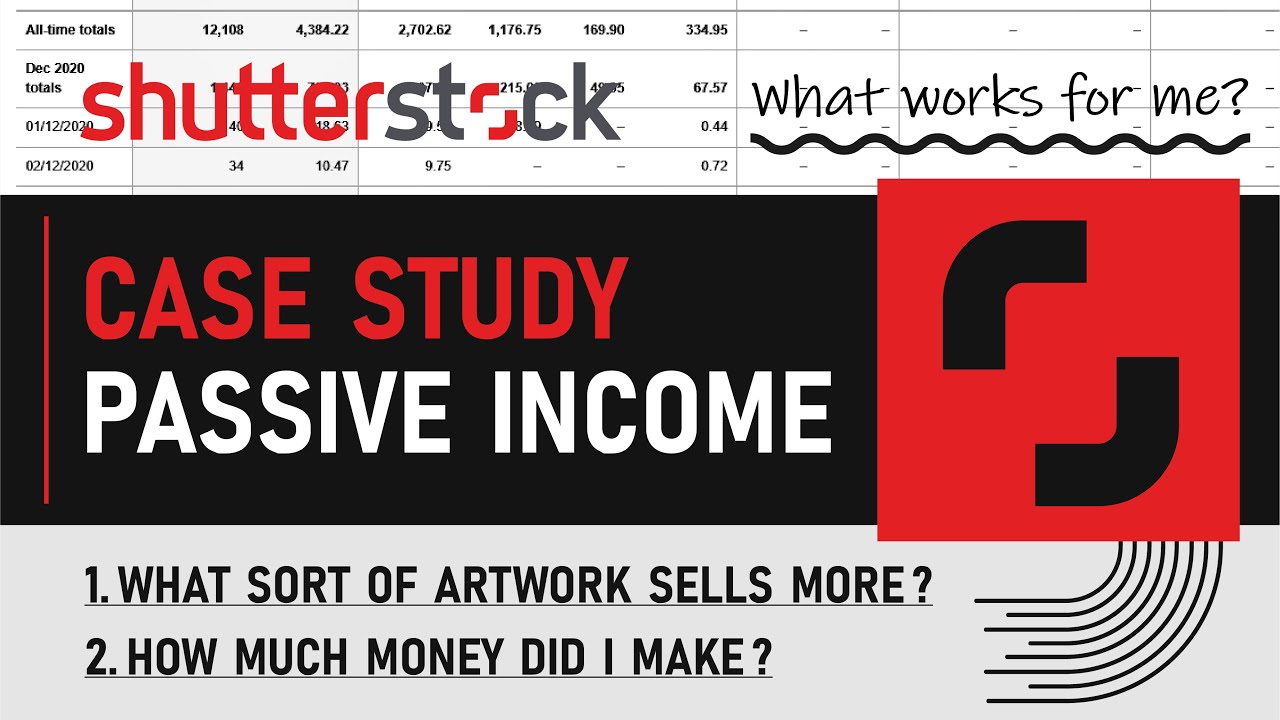Thinking about turning your photography hobby into a steady stream of income? Shutterstock is a popular platform where photographers can sell their images and earn royalties over time. The best part? Once your photos are uploaded and approved, they can generate passive income with minimal ongoing effort. Whether you’re a professional photographer or just love snapping pictures on weekends, Shutterstock offers a fantastic opportunity to monetize your creativity. In this guide, we’ll walk through how to add your photos to
Understanding Shutterstock’s Photo Submission Process

Getting your photos onto Shutterstock might seem a bit daunting at first, but once you understand the process, it’s quite straightforward. Here’s what you need to know:
- Creating an Account: First, sign up as a contributor on Shutterstock. You’ll need to provide some personal information and agree to their terms.
- Preparing Your Photos: Before uploading, make sure your images meet Shutterstock’s quality standards. This includes high resolution (generally at least 4 megapixels), good lighting, and proper composition. Avoid watermarks, borders, or any branding on your images.
- Metadata is Key: Adding accurate and descriptive titles, keywords, and categories helps buyers find your photos easily. Think about what someone might search for and use relevant tags.
Once your photos are ready, follow these steps to submit:
- Upload Files: Use Shutterstock’s contributor portal to upload your images. You can upload multiple files at once.
- Add Metadata: Fill in the title, description, and keywords for each image. Be specific to improve discoverability.
- Select Categories: Choose relevant categories to help your photos reach the right audience.
- Submit for Review: After completing all details, submit your images for review.
Shutterstock’s review team will then evaluate your images for quality, originality, and adherence to their guidelines. This review process can take anywhere from a few days to a couple of weeks. If your images are approved, they go live and become available for licensing. Keep in mind, the more high-quality, unique photos you upload, the higher your chances of earning passive income over time. So, get familiar with the process, prepare your best shots, and start sharing your photography with the world!
Preparing Your Photos for Uploads
Before you start uploading your photos to Shutterstock, it’s super important to make sure they’re polished and ready to impress. Think of it like prepping ingredients before cooking — the better the quality, the more appealing the final dish! Here are some key tips to get your photos ready:
- High Resolution is a Must: Shutterstock prefers images that are at least 4 megapixels. This ensures your photos look great on various devices and for different licensing needs. Aim for a resolution of 300 DPI if you plan to sell prints.
- Focus on Sharpness and Clarity: Blurry or out-of-focus images won’t make the cut. Use editing tools to sharpen your photos, but avoid overdoing it — you want them to look natural.
- Color Correction and Balance: Make sure your colors are true to life. Use editing software to adjust brightness, contrast, and saturation for a vibrant, balanced look.
- Remove Noise and Imperfections: Grainy images or those with distracting spots can be a turn-off. Use noise reduction tools and retouch any blemishes to make your photos spotless.
- Proper Composition: Follow basic rules like the rule of thirds, leading lines, and ample negative space. Well-composed images tend to perform better and attract more buyers.
- Metadata and Keywords: While this comes a bit later, keep in mind to plan your keywords. Clear, relevant keywords help your photos get discovered.
Remember, quality always wins. Take your time to edit and prepare your photos so they stand out in a crowded marketplace. It’s worth investing a little extra effort upfront — it can pay off in higher sales and passive income over time!
Step-by-Step Guide to Upload Photos to Shutterstock
Ready to upload your photos and start earning passive income? Let’s walk through the process step-by-step so you can get your images online quickly and smoothly:
- Create an Account or Log In: Head over to Shutterstock Contributor and sign up if you’re new. If you already have an account, just log in.
- Navigate to the Upload Section: Once logged in, find the “Upload” button, typically located on your dashboard or in the top menu. Click it to start adding your images.
- Select Your Files: You can upload multiple images at once. Choose your prepared photos from your device — just drag and drop or browse to select them.
- Add Titles and Descriptions: Write clear, descriptive titles and detailed descriptions for each photo. Use relevant keywords naturally — this helps your images get found in searches.
- Choose the Right Categories: Assign your photos to appropriate categories or collections. Think about where your images fit best so they reach the right audience.
- Set Licensing Options: Shutterstock offers different licensing options. Usually, Standard License suffices unless you’re offering exclusive rights. Choose what works for you.
- Review and Submit: Double-check all the details — filenames, descriptions, keywords, and categories. Once everything looks good, hit the “Submit” button.
- Wait for Review: Shutterstock reviews your images to ensure they meet quality and content standards. This process can take a few days. Be patient!
And that’s it! After approval, your photos will be available for licensing, and you’ll start earning passive income whenever someone purchases your images. Keep uploading regularly, stay consistent, and watch your portfolio grow. The more high-quality photos you share, the more opportunities for income come your way!
Best Practices for Optimizing Your Photos for Search
Getting your photos noticed on Shutterstock isn’t just about uploading high-quality images; it’s also about making sure they’re easy to find. Think of your photos as products in a crowded marketplace—if customers can’t find them, they won’t buy. That’s where optimization comes into play, helping your images stand out and reach the right audience.
First, pay close attention to your keywords. When you upload a photo, Shutterstock asks for tags and descriptions. Be specific and descriptive—use words that accurately reflect what’s in your image. Instead of generic tags like “nature,” try “sunset over mountain range” or “close-up of blooming cherry blossom.” The more precise, the better your chances of appearing in relevant searches.
Next, consider the title of your image. Make it clear and informative. Instead of just “Beautiful Scene,” opt for something like “Serene Lake at Sunrise with Misty Mountains.” Clear titles help both users and search engines understand what your photo depicts.
Another tip is to use relevant categories and collections. Shutterstock allows you to assign images to categories—use these thoughtfully to improve discoverability. If your photo is of a business meeting, categorize it under “Business & Finance” or “People & Lifestyle.” This helps Shutterstock suggest your images to the right buyers.
Don’t forget to optimize your image file names before uploading. Use descriptive file names with relevant keywords, like mountain-lake-sunset.jpg. This small step can give your photos a slight boost in search rankings.
Finally, keep an eye on trending topics and seasonal themes. Uploading images related to current events, holidays, or popular trends can increase your chances of getting noticed. For example, during Christmas season, photos of decorated trees or holiday gatherings are in high demand.
In summary, effective optimization involves thoughtful keywording, descriptive titles, strategic categorization, and timely uploads. These practices make your photos more discoverable, increasing the chances they’ll be purchased and generate passive income for you over time.
Tips to Increase Your Photos’ Visibility and Sales
Once your photos are optimized, the next step is to actively boost their visibility to maximize sales. Think of it as marketing your own gallery—making sure the right people see your work can significantly impact your income.
Here are some practical tips to help your photos stand out:
- Regular Uploads: Consistency is key. Keep uploading new images regularly to keep your portfolio fresh. Shutterstock’s algorithm favors active contributors, which can help your images surface more often.
- Focus on Niche Subjects: While popular themes are competitive, niche topics can be surprisingly lucrative. Explore areas where you have expertise or unique perspectives—this can set your portfolio apart.
- Engage with Trends: Stay updated on current events, seasons, and trending topics. Upload images that align with what buyers are currently searching for. For example, during a major sports event, sports-related photos tend to spike in demand.
- Use High-Quality, Diverse Content: Offer a variety of images—close-ups, wide shots, different angles, and styles. The more diverse your portfolio, the higher the chance one of your images hits the right note for a buyer.
- Promote Your Portfolio: Share your Shutterstock portfolio on your social media platforms, personal website, or blog. Building an external audience can lead to more views and downloads.
- Participate in Shutterstock Community: Engage with other contributors, join forums, and participate in challenges. Networking can provide valuable tips and increase your exposure within the Shutterstock community.
- Offer Exclusive Content: If you have unique or high-demand images, consider highlighting them as exclusive to Shutterstock. Exclusivity can sometimes lead to higher commissions and more visibility.
Lastly, monitor your performance. Use Shutterstock’s analytics tools to see which images sell best and adapt your strategy accordingly. If certain themes or styles perform well, create more content in that vein.
By actively promoting your work, staying current with trends, and continuously adding quality images, you’ll boost your photos’ visibility and sales over time. Remember, building a passive income stream on Shutterstock is a marathon, not a sprint. Patience, persistence, and smart strategies will pay off in the long run.
Understanding Shutterstock’s Licensing and Payment Structure
Before diving into uploading your amazing photos, it’s super important to understand how Shutterstock handles licensing and payments. This knowledge helps you make smarter decisions about what to upload and how to maximize your earnings.
Shutterstock offers two main types of licenses for buyers:
- Standard License: Suitable for most uses like websites, social media, and print materials up to 500,000 copies.
- Enhanced License: For larger scale projects, merchandise, or uses exceeding the limits of a standard license. It provides broader rights and higher quality usage.
As a contributor, you earn money based on how your images are licensed. The payout structure is primarily royalty-based, meaning you get a percentage of the sale price each time someone licenses your photo.
The exact earnings depend on your contributor level, which is determined by your total lifetime earnings:
| Contributor Level | Lifetime Earnings | Royalty Rate |
|---|---|---|
| Standard | $0 – $999 | 15-30% |
| Elite | $1,000 – $9,999 | 30-40% |
| Exclusive | $10,000+ | Up to 50% |
It’s worth noting that Shutterstock also offers a subscription model where buyers pay a monthly fee for a set number of downloads, impacting your earnings per download. The more you understand these structures, the better you can tailor your uploads to maximize passive income.
And don’t forget—Shutterstock pays out monthly, usually around the 15th of each month, once your earnings reach the minimum payout threshold (which is typically $35). Ensuring your payment info is correct and up-to-date helps you get your earnings without delays.
In summary, knowing the licensing options and how you get paid empowers you to upload strategically and earn steadily. It’s all about understanding the system so you can play to your strengths and grow your passive income stream.
Common Mistakes to Avoid When Uploading Photos
Uploading photos to Shutterstock might seem straightforward, but there are some common pitfalls that can trip you up or slow down your income growth. Let’s go over a few mistakes to watch out for—and how to avoid them.
1. Poor Image Quality: Uploading blurry, grainy, or poorly lit images is a quick way to get rejected. Always ensure your photos are sharp, well-exposed, and high-resolution.
2. Ignoring Model and Property Releases: If your photos include recognizable people or private property, make sure you have the proper releases. Without them, your images may be rejected or limited in licensing options.
3. Over-Editing or Over-Filtering: While a touch of enhancement is fine, overly edited images that look unnatural can turn off buyers. Keep edits subtle and natural-looking.
4. Not Using Relevant Keywords: Keywords help your photos get found. Avoid vague or irrelevant tags; instead, use specific, descriptive keywords that match what buyers might search for.
5. Ignoring the Upload Guidelines: Each platform has rules about file size, format, and content. Make sure your uploads comply to avoid rejection or delays. For example, Shutterstock prefers JPEG files with a minimum of 4 megapixels.
6. Forgetting to Add Proper Titles and Descriptions: A compelling title and detailed description can boost your chances of sales. Be clear, concise, and descriptive—think about what a buyer would search for.
7. Not Regularly Uploading New Content: Consistency is key. The more high-quality photos you upload, the higher your chances of making passive income. Avoid the trap of uploading just a few images and hoping for the best.
Remember, the goal is to build a strong, reputable portfolio that attracts buyers over time. Avoiding these common mistakes can save you time, frustration, and help you earn more passive income from your photography efforts.
FAQs About Selling Photos on Shutterstock
Thinking about diving into the world of stock photography on Shutterstock? You probably have a bunch of questions, and that’s totally normal! Let’s go through some of the most common FAQs to help you get started with confidence.
Q1: Do I need professional equipment to sell photos on Shutterstock?
Not necessarily! While high-quality images tend to perform better, you don’t need the most expensive camera out there. A good smartphone or a decent digital camera can do the trick, as long as your photos are sharp, well-lit, and composed thoughtfully. The key is clarity and relevance—be sure your images are visually appealing and meet Shutterstock’s technical requirements.
Q2: Are there specific topics or styles that sell best?
Great question! Shutterstock buyers look for a variety of images, but some popular categories include:
- Business and technology
- Health and wellness
- Travel and landscapes
- Food and beverages
- People in everyday scenarios
That said, don’t shy away from niche topics or unique perspectives. Authenticity and originality often stand out more than just following trends.
Q3: How do I ensure my photos get approved?
Shutterstock has specific quality standards. Make sure your images are:
- High resolution (generally at least 4 MP)
- Sharp and in focus
- Properly exposed with good lighting
- Free of noise, artifacts, or over-editing
- In compliance with their content guidelines (no copyrighted logos, private property, or sensitive content)
Take your time to review Shutterstock’s contributor guidelines—they’re super helpful and will give you a clear idea of what’s needed for approval.
Q4: How much can I earn from my photos?
Your earnings depend on several factors, including the size of your image, licensing type, and how often your photos are downloaded. Shutterstock operates on a royalty-sharing model, and contributors earn a percentage of each sale—usually between 15% and 30%. Over time, as your portfolio grows and your images become popular, your passive income can build up significantly.
Q5: How do I get paid?
Shutterstock pays contributors via PayPal, Skrill, or wire transfer once your earnings reach the minimum payout threshold (typically $35). Payments are made monthly, and you can track your earnings anytime through your contributor dashboard.
Conclusion and Final Tips for Successful Passive Income Generation
Congratulations! You’re now equipped with the knowledge to start adding photos to Shutterstock and turning your creativity into a steady stream of passive income. Remember, success in stock photography isn’t just about uploading a few images and hoping for the best—it’s about consistency, quality, and understanding your audience.
Here are some final tips to keep in mind:
- Consistency is key: Regularly upload fresh, high-quality images to keep your portfolio active and appealing.
- Stay current: Keep an eye on trending topics and popular styles to create relevant content.
- Optimize your keywords: Use descriptive, accurate keywords to help buyers find your photos easily.
- Pay attention to quality: Invest in good equipment and editing skills to produce professional-looking images.
- Learn from feedback: Review which photos sell well and try to understand what the market prefers.
- Be patient: Building a substantial passive income takes time. Don’t get discouraged if your photos don’t sell immediately.
Finally, enjoy the process! Photography is a creative outlet, and sharing your unique perspective can be both rewarding and profitable. With dedication and a strategic approach, you can turn your passion into a reliable source of passive income on Shutterstock. Happy shooting!


